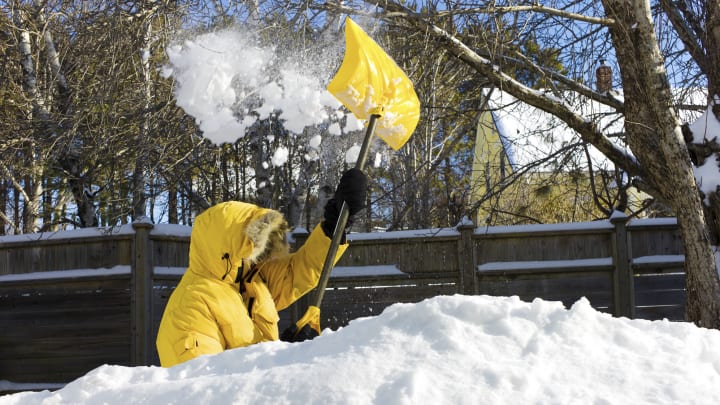Snowfall vs. Snow Depth: What’s the Difference?
By Jake Rossen

When it comes to being able to back out of your driveway, navigate roads, or get school canceled, the intensity of a snowstorm is everything. A few flakes and you won’t be able to plausibly remain indoors. But just because you hear about “15 inches of snowfall” doesn’t necessarily mean there’s 15 inches of powder on the ground. So what’s the difference between snowfall and snow depth?
According to Lifehacker, snowfall is easy enough to understand. It’s the amount of snow that’s fallen over a given period of time. A region might get 12 inches of snowfall overnight, as measured by the snow that’s accumulated in an area free of obstructions, like an overhang or trees.
Snow depth is an extremely similar measurement in that it’s the total amount of snow currently collected on the ground. But it's not always identical. If 24 inches of snow fell overnight, the amount of snow depth on the ground in the afternoon might only be 18 inches after 6 inches melted, either due to temperature or being pelted by rain.
Snow depth can also increase from snowfall. Think about two storm systems moving through a region in quick succession. Even though 12 inches may fall, it’s contributing to 12 inches already on the ground—making for 2 feet of vehicle-defying weather.
Snow depth can also be influenced by wind carrying snow from one area to another and depositing it on top of existing snow.
In short, snowfall is what fell, or what’s expected to fall in a weather forecast; snow depth is what's on the ground in a given place. If 10 inches of snowfall battered your area, you might be shoveling a little more—or less—in snow depth the following morning.
[h/t Lifehacker]